Indiana Jones, Temples of Jews and Acts: Who Did Philip talk To? Exegetical Notes on Acts 8.27 and Why History Matters
Author: Bobby Valentine | Filed under: Acts, Africa, Bible, Black History, Church, Church History, Exegesis, Jewish BackgroundsMy Hidden Blinders, From My World to Luke’s
There were (and are) many things I did not know.
I remember when I became clearly conscious that the “Ethiopian” Eunuch was black. I was an adult. I was in my first full time ministry work, in New Orleans. Of course I had taken “Acts” in Bible college and was sure I knew Acts (it is after all “our” book right). It should have been automatic. But it wasn’t. I do not remember what color I thought he was but I had not consciously identified him as “black.” When I look back on that time in my life, sadly, the Ethiopian was like Ralph Ellison’s “Invisible Man” to me.
I frankly confess that I was embarrassed that this fact had never sunk deeply into my mind and soul. But indeed he was. A loving black brother, who helped educate me a great deal during my time in New Orleans, opened my eyes. I also did not know that “Ethiopia” in Acts 8 is not what is called Ethiopia today.
Christianity was in the heart of Africa before it was in the heart of Europe. This is an important point. So just who was this man and what can we possibly know about him. That is what my article is all about.
The Necessity of Historical Context
Today we are going to look at Acts 8.27: “Now there was an Ethiopian eunuch, a court official of THE Candace, queen of the Ethiopians.”
Who was this man?
Where was this guy from?
How did he come to know about Yahweh?
The Bible is a book that is rooted and grounded in historical realities but it is easy for moderns to simply impose ideas on the text that are perfectly “common sense” to us but totally nonsense to the writer and his/her readers. We often subconsciously turn the folks within the biblical narrative into mirror images of ourselves (and myself was a white American).
Historical rootedness is what makes the biblical narrative radically different from myths. The people are historical. The places are historical. Now, I do not mean by historical simply opposed to “make believe.”
Historical means that people, and places, are defined by the languages they spoke, the places they lived, the culture in which they breathed. The fact that the Bible is historical means the history surrounding the people and places and events actually shape the people, places and events. That reality places limits on who and what they were and also on our often fanciful imaginations of who and what they were and did.
History matters because the Bible itself matters. The biggest example of this is the incarnation of the Word in a specific time, place, culture and ethnicity. To divorce the Word from that history is to fashion a humanly made idol. So as students of God’s word we take the historical setting with the utmost seriousness precisely because we take God’s word seriously and want to hear it and not our imaginations.
Thus it is with our famous text in Acts 8 where Philip, the father of four prophets (his daughters). We ask those historical questions to help us understand what was going on. Where was he from? Ethiopia of course! Well it is not that simple. This is a time when we need to realize that two thousand years exist between Act 8 and our reading of it today. Lots of “history” has happened in two thousand years that we may not realize impacts how we read the text.
The eunuch was from “Aithiopia” which is the Greek rendering for what “Old Testament” readers know as “Cush” or “Nubia,” which was the Kingdom of Meroe in Roman times. Further, if we think Aithiopia was the same place that on a modern map designates “Ethiopia” then we have made a serious mistake (see map insert). The horn of Africa was known as the Aksum in Roman days. Then for centuries by its Arabic name Abyssinia. Only in the 20th century did this area, the horn of Africa, acquire the name Ethiopia.
Kingdom of Meroe
Meroe, Nubia/Cush, was a thriving civilization for a thousand years centered in what is today Sudan. The country ruled Egypt from time to time in antiquity and was described by Herodotus. When Mereo finally declined and virtually disappeared in the Fourth Century AD, ignorant Europeans over a thousand years later dismissed it as myth.
That was until James Bruce rediscovered some of the civilization in 1772. Meroe is located approximately one thousand miles south of the Mediterranean Sea down the mighty Nile River. To grasp this distance remember that a thousand miles is basically the distance from Los Angeles to Amarillo, TX. Certainly a very long way via foot, camel or even boat along the Nile. The individual in Acts 8 was a most dedicated man of God.
The Romans became involved in Meroe in the first century B.C. through Octavian’s conflict with Anthony and Cleopatra in Egypt. In fact, in 29 BC Meroe was declared to be a protectorate of Rome by “Augustus” (Octavian) as he boasts in his famous Res Gestae set up in present day Ankara Turkey. The Kingdom of Meroe, however, did not willingly submit to Rome’s “protection.” After some conflict Meroe was granted independence and Roman troops withdrew from Qasr Ibrim to what we call Aswan today.
Rome and Meroe would maintain friendly, and profitable, relations for the next 300 years. Greek was spoken in Meroe, as was Meroitic and various forms of Egyptian. Meroe was of critical importance because it was the gateway to the vast interior of Africa and became rich because of the vast flow of trade north to Egypt and on to the rest of the Empire and south to the interior of Africa. This is the area that was called “Aithiopia” for well over a thousand years.
Candace is not a name but title used in the Meroitic kingdom for the Queen. The NIV 2011 in fact uses the Greek title and not “Candace” of traditional English versions. She is the “Queen Mother” basically. That is the mother of the king. The Candace in Acts 8.27 was probably Queen Nawidemak who ruled in the first half of the first century AD. Her tomb has been discovered and excavated by archeologists.
We moderns are not helped by our Bibles on this matter. The maps that are included in the back of most Bibles do not have any reference to Meroe/Cush at all. Perhaps a thousand miles from the Mediterranean is too far in the opinion of some. But the world of the Bible is more than just around Jerusalem.
The eunuch traveled a LOOOOOONG way to worship the God of Israel. For more on Meroe, Rome and the Eunuch see Edwin Yamauchi’s rich work, Africa and the Bible, pp. 149- 181. Two chapters “Rome and Meroe” and “Why the Ethiopian Eunuch was not from Ethiopia.” Yamauchi is required reading for a deeper and contextual understanding of many passages in the Bible in both Testaments.
How Did the Eunuch Come to Know Yahweh? Indiana Jones Discovers Two Jewish Temples
Ok, we now know where the “Ethiopian” was from. But how did he come to know about Yahweh? The short answer is, of course, from Jews. But how and where?
Some out of date scholars, surprisingly, actually claim that the Ethiopian was himself in fact Jewish. J. W. McGarvey makes this claim with no evidence whatsoever (he does mention the possibility of him being a proselyte but dismisses it, but why?).
He is a black African. He is a proselyte or more likely God-fearer (as a eunuch circumcision would not have been possible in the literal sense). But Meroe is a LONG way, not only from Jerusalem but from the Mediterranean coast. Here we need to know that there is more to the story than we probably know.
For starters, Israelites had penetrated deep into Africa centuries before the eunuch was born. In 1893 a horde of Aramaic texts were discovered and published in 1911 and various times since. These texts reveal a previously unknown Jewish colony that existed on the island of Elephantine in the Nile River. The letters show the life of the colony in the 5th century BC. When the Persians under Cambyses II conquered Egypt in 525 BC the colony was already thriving and well established. Among the interesting things in these Elephantine texts is an exhortation from Darius dated 419 BC to keep the Passover and told them to abstain from beer during the feast (cf Passover Papyrus).
How, and when, this colony came to this remote part of southern Egypt is a subject of debate. But scholars think it originated either in the time of Manasseh, who was an ally of Egypt, and Elephantine was a military garrison with Israelite troops. Others think it began shortly after that time. Either way by the time of the Babylonian invasion many Jews had gone to Egypt (some even kidnapped Jeremiah to go there (Jer 43.5-7). So by the time of the destruction of Jerusalem the colony on Elephantine was in existence. Scholars have suggested that the “Hananiah” mentioned in the letters as a Persian administrator is the same brother of Nehemiah mentioned in Nehemiah 1.2 and 7.2.
Not only was the discovery of this Jewish colony a complete surprise to scholars, but the real shock was that by the time of Ezra and Nehemiah’s return to Judah, a TEMPLE to Yahweh had been built on the island of Elephantine. This temple existed for hundreds of years.
As mentioned above, the Aramaic texts from Elephantine were discovered in 1893. Since then there had been a “frenzy” to find the temple described in them but it eluded discovery. During the early 400’s BC the temple was attacked by Egyptian priests on the same island from the temple of Khnum.
Among the Aramaic documents discovered, there are letters to the Jerusalem temple and Persian authorities contemporary with Nehemiah. The Jews received permission to rebuild the temple, with the caveat that only offer cereal offerings not animal sacrifice were to be performed (apparently the Egyptians did not like the slaughter of animals they deemed sacred so to keep the peace only grain offerings were allowed).
But providentially in 1997 a German archeological team, lead by Cornelius von Pilgrim (yes that is his name), finally discovered the Jewish temple on the island of Elephantine. In an article in Near Eastern Archaeology 67 (2004), 4-13, Stephen Rosenberg, of the Albright Institute in Jerusalem, published the first architectural lay out of this ancient Jewish temple. Pilgrim’s and Rosenberg’s study tends to support the origin of this colony from Northern Israelites because the layout of the temple closely matches the design recorded for the Tabernacle in Exodus 25-27 rather than the Jerusalem Temple.
Some scholars now think that this temple is alluded to in Isaiah 19.19 which states
“on that day there will be an altar to the LORD
in the center of the land of Egypt
and a pillar to the LORD at its border.”
Elephantine certainly was basically the southern frontier border of Egypt. Whatever is the case, for centuries the worship of Yahweh was done in the vicinity of the kingdom of Meroe. The colony and its temple was lost to history to be shockingly revealed a hundred years ago and the temple … more like a shrine on the model of the tabernacle only discovered 20 years ago.
We have no idea if the Jews and temple on Elephantine had any influence in anyway on the religious faith of Africans. Certainly it is possible. But as Jewish scholar Shaye J. D. Cohen noted on the importance of Egypt to Jewish history, “Hellenistic Egypt. Islamic Spain. Renaissance Italy. These were magical times and places, ‘Golden Ages’ in the history of Jews and Judaism.”
By the time of the first century there were more Jews in Egypt than in Palestine. The Septuagint comes from Egypt. Philo was from Egypt. The oldest synagogue ever discovered is in Egypt. Jews had been living in Egypt since before the fall of Jerusalem. Ethnically specific Jewish cemeteries have been found in most of the classical sites in Egypt. Jews achieved a high reputation and civilization in Egypt … so much so it is called a Golden Age in Jewish history. Sadly, also some of the first and most ancient examples of anti-semitiism are also in Egypt.
And Yet Another Temple
Egypt was not the home to one, but two temples to Yahweh. The first at Elephantine was a total shock when discovered. The second is still a shock for most people who read only the Old and New Testaments. But it has been known for over two thousand years. Its memory and legitimacy is preserved in Josephus, the Mishnah and the Talmud. The temple that was built in Ptolemaic Egypt in Leotopolis (north of present Cairo) stems from the Maccabean crises. The temple was built by the Oniads who were the legitimate descendants of Zadok from the time of Solomon. Onias IV fled to Egypt when Antiochus IV sold the High Priesthood in the Jerusalem temple to the highest bidder. This of course led to the desecration of the temple and the Maccabean revolt. That was one Jewish response. The other response was Onias
IV going to Egypt as an ally of the Ptolomy’s and getting permission to built a temple to the “Most High God.” This temple had priests, Levites and daily sacrifices. According to the Mishnah vows and sacrifices at Leonotopolis were legitimate. Priests there were recognized as priests but could not offer sacrifice in Jerusalem but they could eat the priests portion. This temple in Leontopolis was destroyed by the Romans as a result of the Jewish Revolt in AD 73/4.
Back to the Man
Where did the man from Meroe hear the good news about Yahweh and his ways? Any number of places are possible. Alexandria, where he most certainly had sailed from, had a huge Jewish population. He could have heard readings from the LXX (he was reading it himself in Acts 8). He could have been to Leontopolis itself. The likelihood is that he was a believer long before he set out on his pilgrimage. But we do not know where. The Jewish temple at Elephantine could have been “leaven” in Africa, who knows.
What we do know is that there was plenty of opportunity for Africans to learn something about the God of Israel as our survey of dusty history has shown. James himself said that Moses was proclaimed in every city (Acts 15.21). Where ever he heard the word, he embraced the God of Israel as the true
God. So convinced of this truth he felt the need to go not to Leonotopolis but to Jerusalem. In the magnificent work of the Spirit his paths crossed a Greek speaking Jew named Philip who preached to him Jesus.
The man from Meroe took his faith in the Jewish Messiah back with him. What did he do when he returned? He had no book of Acts, no Romans or Galatians or Ephesians or Matthew, Mark, Luke or John. All he had was the Bible he already had … the one that came from Egypt. He never heard the name “Christian.” I doubt seriously that he thought he was changing religions. I wonder what his kind of the Jesus Way looked like … what is now called the “Ethiopian” Orthodox Church believes that this man in Acts 8 began them.
Hope for the Man of Meroe
Eunuchs in the ancient world were made, they were not born. Eunuch’s could hold considerable clout but they were also a slave. They were slaves to the ones who made them eunuchs. Isaiah even warned Hezekiah, “some of your own sons who are born to you shall be taken away; they shall be eunuchs in the palace of the king of Babylon” (2 Kings 20.18).
The man in Acts 8 is, in many ways, like the nameless man in Acts 3.1-2 (which Luke spends essentially two chapters explaining). He is excluded. Salvation came to that man born lame and he went rejoicing and praising God in the temple. The man from Meroe was also exclude because of the condition of his body. But salvation has restored him and he too goes on his way rejoicing and worshiping God. The hope of Israel, the Jubilee mission of the Messiah, is being realized. Two texts that perhaps the Eunuch knew (one he would have read on his way to the worship in Jerusalem).
“Do not let the foreigner joined to the LORD say,
‘The LORD will surely separate me from his people’;
and do not let the eunuch say,
‘I am a dry tree.’
For thus says the LORD:
To the eunuchs who keep my sabbaths,
who choose the things that please me
and hold fast my covenant,
I will give, in my house [i.e. temple] and within my walls,
a monument and a name
better than sons and daughters;
I will give them an everlasting name
that shall not be cut off.
And let the foreigners who join themselves to the LORD,
to minister to him, to love the name of the LORD,
and to be his servants,
all who keep the sabbath and do not profane it,
and hold fast my covenant –
these I will bring to my holy mountain,
and make them joyful in my house of prayer;
their burnt offerings and their sacrifices will
be accepted on my altar;
for my house shall be called a house of prayer
for all peoples.
Thus says the LORD God,
who gathers the outcasts of Israel,
I will gather others to them
besides those already gathered”
(Isaiah 56.3-7)
And the other text of Jewish hope …
“Blessed also is the eunuch whose
hands have done no lawless deed,
and who has not devised wicked things
against the Lord;
for special favor (χάρις, grace) will be shown
him for his faithfulness,
and a place of great delight in
the temple of the Lord.”
(Wisdom of Solomon 3.14).
Final Thoughts
So did God send those long forgotten Jewish soldiers to Elephantine to prepare the way? Who knows? What about that Temple that no one knows about in Leontopolis? God has done stranger things to help bring people to faith in the Messiah.
Just wondering … hope you have been blessed.
A few sources to help study:
F. F. Bruce, “Philip and the Ethiopian,” Journal of Semitic Studies 34 (1989): 377-86.
Josephus, Antiquities of the Jews 13.64-74; Jewish Wars, 7.426-432
Joseph Meleze Modrzejewski, The Jews of Egypt: From Rameses II to Emperor Hadrian (T&T Clark 1995)
Stephen G. Rosenberg, “The Jewish Temple at Elephantine” Near Eastern Archaeology 67 (2004), 4-13
Edwin Yamauchi, Africa and the Bible (Baker Academic 2004)
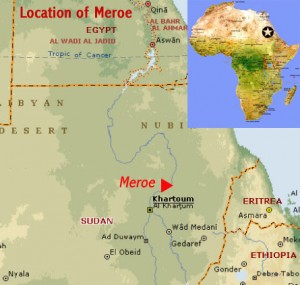
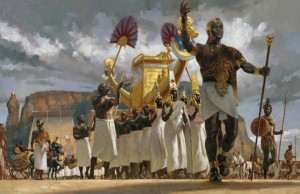

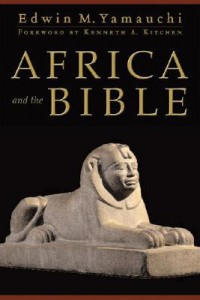
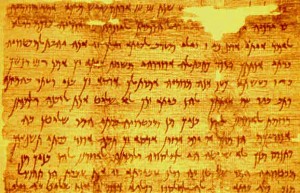
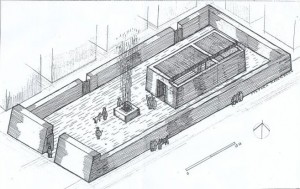
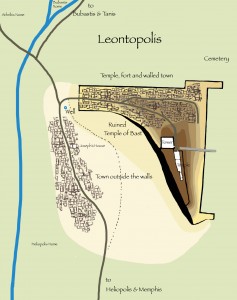
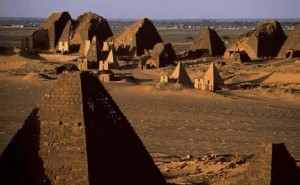
January 19th, 2016 at 9:39 pm
This article on the Ethiopian Eunuch was informative, but could have benefitted from some editing. Your CONTACT page gives a 404 message, so glad you added this form below. I do want to read more.
January 19th, 2016 at 9:42 pm
“STONED-CAMPBELL” – is this your idea of a joke?
January 19th, 2016 at 9:49 pm
Glad to have you drop by Daniel. I am sure that this piece could be improved no doubt. As for Stoned-Campbell you can read here 🙂 “Why Stoned-Campbell Disciple?”
February 10th, 2016 at 12:55 pm
Great article. In particular about the two other Temples. While many brothers argue that to replicate anything is sinful, this is only true if it is meant to replace or alter and not supplement. These other temples didn’t replace the Temple in Jerusalem.
God obviously allowed one of them during the time of the written scriptures.
The Stone’d’-Campbell name does distract some, but not overwhelmingly so. It is interesting that even in the conservative circles 25-30 years ago we used to have many, many lessons against smoking and tobacco/drinking/ dancing, but I haven’t heard any in the last 10 years. Still do on drinking wine, etc. though.
February 10th, 2016 at 8:13 pm
Making assumptions is dangerous Dwight 🙂 “Stoned-Campbell” has nothing to do with smoking, tobacco, drinking or dancing. Though Scripture, contrary to popular opinion in the South, is hardly anti-wine. Here is a blog that has been up for many many years, follow the link … Why Stoned-Campbell?
February 24th, 2016 at 12:48 pm
As usual very interesting and fun to deal with. 🙂
February 11th, 2017 at 2:14 pm
The eunuch could not have entered the temple to worship in Jerusalem if he had no testicles (Deut 21:1, see also Str-B I, 809; Josephus Ant. 4.8.40), so we must assume that he was not castrated and met the law’s regulation to worship there. In ancient literature, eunuchs were men who had no sexual desire for women. Jesus said that some eunuchs are “born that way” (Mat 19:10). It seems that eunuchs who have been so from birth are the closest description we have in the Bible of what we understand today as homosexual.
The ancient literature (even the Talmud) portrays eunuchs who were anatomically able to procreate, but had a sexual aversion to or were impotent with women, and they were commonly known to have sex with other men and had effeminate characteristics.
Thus, not only does Acts teach that an African black man is accepted in the kingdom, but also accepted are those who have no sexual inclination for women. The gospel is for all (Isa 56:3-8).